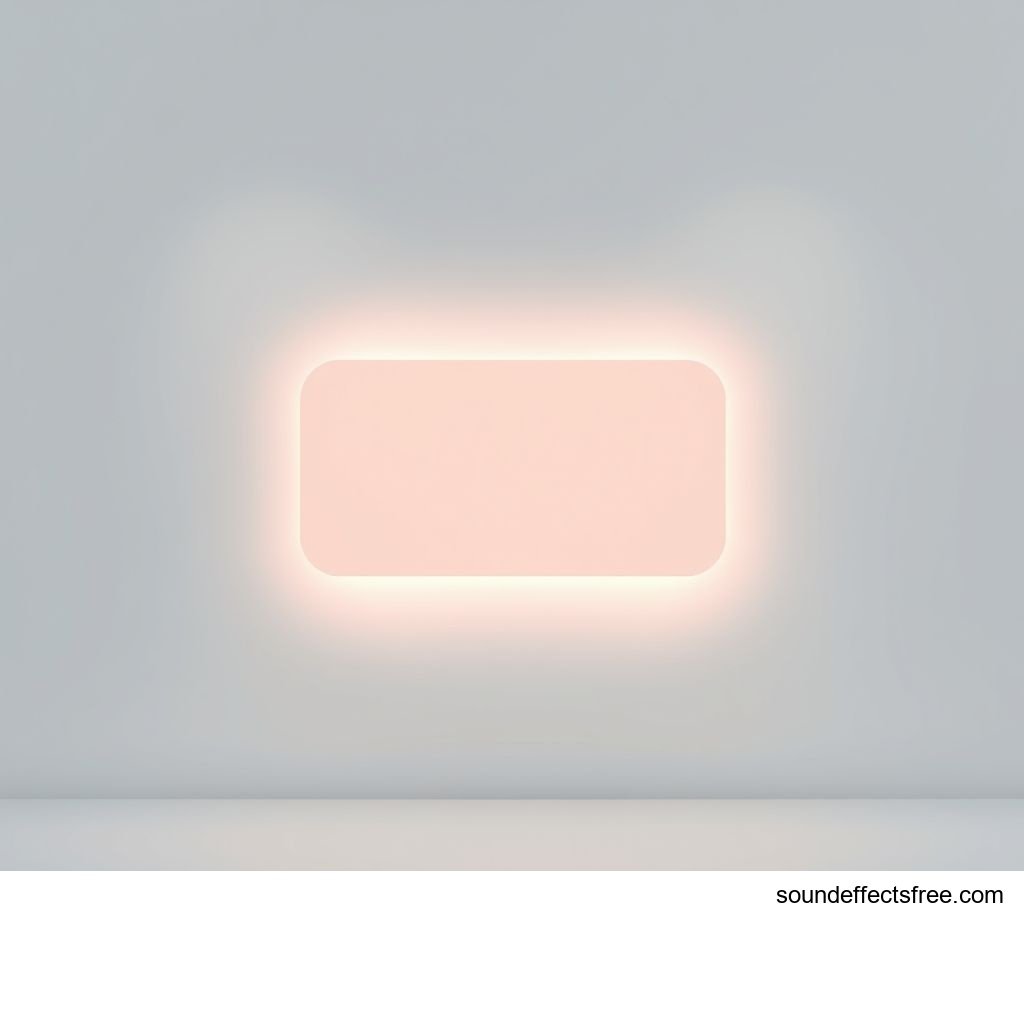UI Toggle Engaging: Enhancing Digital Feedback
The user interface (UI) is crucial for digital interactions. Engaging UI sound effects make a huge difference. A simple UI toggle sound can transform a digital experience. It provides immediate auditory feedback. This sound confirms actions and enhances usability. A well-designed UI audio effect contributes significantly to overall satisfaction. It makes every interaction feel more responsive. This article explores the importance of such UI sounds. We will delve into their applications and technical aspects. We also cover production tips for creating compelling UI sfx.
Applications in Media
UI sounds are everywhere in our digital world. They guide users in video games. They confirm actions in mobile applications. Even films and television shows use custom UI sound samples. A distinct UI audio effect provides clarity. It can signal success or failure. It also helps users understand system states. A good UI sound enhances immersion in any digital environment. Think about a simple UI switch; its sound makes it tangible.
Industry-Specific Uses
In gaming, UI sounds confirm every player action. A click, a whoosh, or a subtle hum indicates a successful UI selection. This instant feedback is vital for gameplay flow. Every UI interaction matters. Mobile apps also benefit greatly. Smooth UI transitions are paired with crisp audio effects. This creates a more intuitive and satisfying experience. Imagine a UI toggle on your phone. Its sound helps confirm the setting change.
Film and television often feature futuristic UI designs. These require bespoke UI sounds. They help create believable on-screen technology. Think of a complex digital interface. Its many UI elements need unique audio cues. Medical devices also use critical UI sounds. Clear audio feedback is vital for safety and precision. Every UI action must be clearly communicated.
Creative Techniques
Varying UI sounds adds depth and realism. Do not use the same UI sound for every action. Different tones for different states are effective. A gentle UI click can signify activation. A distinct UI thud might signal deactivation. This differentiation provides richer feedback. It makes the UI more informative. Consider the context of the UI element. Is it a primary action? Or a subtle background process? The UI sound should match its importance.
Technical Analysis
Understanding UI sound properties is key to creating impact. A good UI toggle sound has specific qualities. These properties influence how the sound is perceived. They affect its clarity and effectiveness. Analyzing these elements helps in sound design.
Waveform Characteristics
The waveform shows the sound's visual shape. For a UI sound, a sharp attack makes it punchy. This rapid onset grabs attention. A quick decay creates a crisp audio effect. It prevents the sound from lingering too long. Look for clean transients in UI samples. These sharp peaks indicate a clear initial impact. A well-defined waveform ensures the UI sound is precise. It helps it cut through other audio elements.
Frequency Profile
The frequency profile reveals the sound's pitch and timbre. Mid-range frequencies are often best for UI sounds. They are clear without being harsh or boomy. Avoid overly bright or muddy UI sounds. Bright sounds can be fatiguing. Muddy sounds lack definition. A balanced UI spectrum is pleasant to the ear. It ensures the UI sound is easily heard. It prevents it from clashing with background audio. This careful balance makes the UI more user-friendly.
Production Tips
Producing high-quality UI sounds requires attention to detail. Even a simple UI switch sound needs careful crafting. It can significantly impact user perception. These tips will help you create effective digital audio.
Recording & Editing
Capturing real-world sounds can provide excellent source material for UI. Clicks from buttons, mechanical switches, or even subtle taps on surfaces can be useful. Record these sounds in a clean environment. This minimizes unwanted background noise. Clean editing is crucial for UI recordings. Remove any hums, static, or environmental sounds. Refine the UI audio effect for maximum clarity. Trim silences precisely. Ensure the sound begins and ends crisply.
Software Tools
Digital Audio Workstations (DAWs) are essential for UI sound design. Software like Adobe Audition, Pro Tools, or Logic Pro allow precise editing. They let you manipulate waveforms and apply effects. Plugins can shape the UI sound further. Equalizers can sculpt the frequency profile. Compressors can control dynamics. Synthesizers can also generate unique UI samples. These tools offer limitless possibilities for creative UI audio.
Creative Implementation
Implementing UI sounds creatively enhances user engagement. Do not just drop a sound into your UI. Consider how it interacts with the entire user experience. Thoughtful placement makes a significant difference.
Layering Methods
Combine different UI sounds for richer textures. Layer a basic click with a subtle whoosh for a UI toggle action. This adds depth and character to the feedback. It creates complex UI audio effects. You can layer multiple elements. A metallic clang combined with a digital synth tone. This makes the UI feel more sophisticated. Experiment with different combinations. Find what best suits your digital interface.
Spatial Effects
Use panning to place UI sounds within a stereo field. A UI element moving left could have a corresponding sound. That sound pans from the center to the left. Reverb can add depth to UI notifications. A touch of short reverb can make a UI click feel more substantial. Make the UI sound feel real within the digital space. This enhances immersion and user orientation.
Sound Pack Integration
Integrating sound packs simplifies UI design significantly. Pre-made UI sfx collections save valuable development time. They also ensure consistency across your project. Many sound packs offer a cohesive set of audio assets.
Using with Other Sounds
Combine this UI with other sounds from its pack. Ensure all UI elements have a consistent audio signature. This creates a unified and professional soundscape. Match the UI sound with background music or ambient tones. A cohesive UI experience feels polished. It shows attention to detail. This integration makes the digital environment more believable.
Complete Collection
For comprehensive audio solutions, explore a full sound pack. This ensures all your UI needs are met. Professional sound libraries offer diverse options. Get the full sound pack for comprehensive audio solutions. This can include various UI samples. You might find a range of toggle, switch, and other feedback sounds. Enhance your entire digital UI with high-quality audio.
Engaging UI sounds are more than just aesthetics. They provide crucial feedback. They guide users through digital interfaces. A carefully designed UI toggle sound improves usability. It confirms actions and reduces confusion. Investing in quality UI audio is a smart decision. It enhances the overall user experience. It makes digital interactions truly resonate. Explore Related UI sounds to discover more options. Check out the crisp UI Confirm Tap for another great example of clear feedback.
FAQ Section
Q1: What makes a UI toggle sound effective? A: An effective UI toggle sound provides clear feedback. It should be distinct and have an appropriate volume level. This allows users to confirm their actions immediately.
Q2: Why are UI sounds important for user experience? A: UI sounds are crucial for user experience because they provide auditory cues. They confirm actions, reduce uncertainty, and enhance immersion. This makes digital interactions more intuitive.
Q3: Can I use generic UI sounds in my project? A: While generic UI sounds can be used, custom UI audio effects offer better branding. They create a stronger connection with the user. Unique sounds make your digital product stand out.
Q4: How do UI sounds affect accessibility? A: Auditory feedback from UI sounds significantly assists users with visual impairments. It provides non-visual cues about interaction outcomes. This improves overall accessibility.
Q5: Where can I find high-quality UI audio effects? A: You can find high-quality UI audio effects from professional libraries. Websites like Pro Sound Effects offer premium UI samples and sound packs.





